In the past, I always used manual cameras. I measured the light, set the exposure, and focussed myself. Even in a car, I like to be in control and only drive manual transmission, which is almost unheard of in the United States. The point-and-shoot craze of the 1990s completely passed by me. But now I have this funny little Olympus Trip 35, a “point-and-shoot.”
Why I bought it is a bit of a story. In preparation for a 2017 trip to Nepal, I sent my Leica IIIC off for repair. But in case it would not be ready in time, I bought three inexpensive compact 35s from the ‘Bay. A Minolta was dead on arrival, but a Yashica Electro 35CC and an Olympus Trip 35 were fully functional. However, the Leica was overhauled in time for Asia, so the Trip stayed home. But I was curious to see if the Trip 35 was as good as so many reviewers claim.
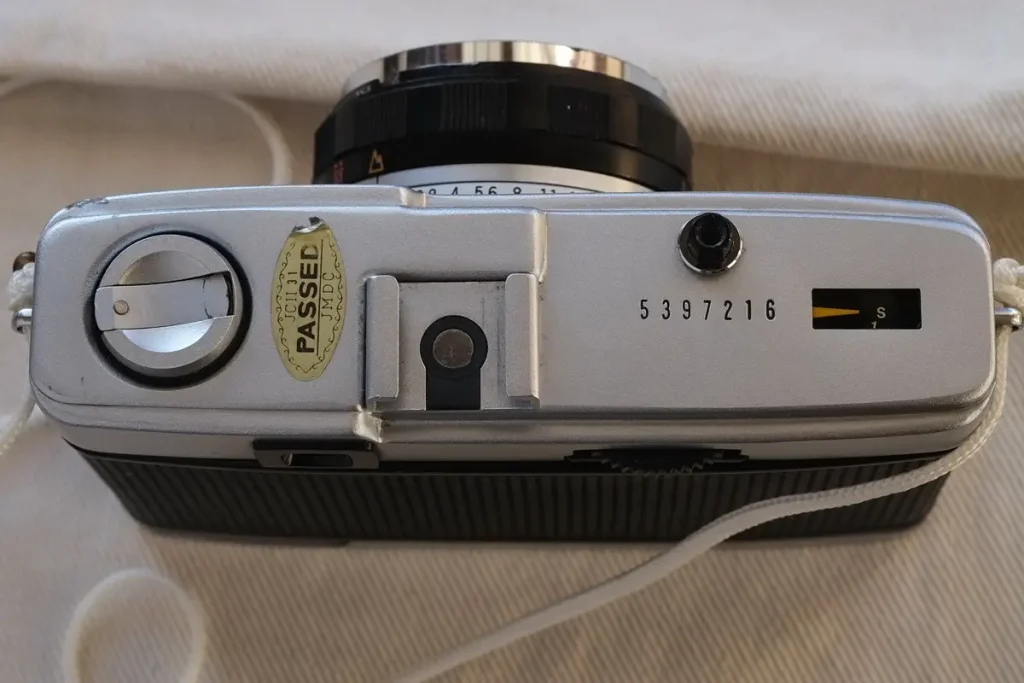
As you can see, the Olympus Trip 35 is a simple device. Film winding is via a wheel on the back. Exposure is automatic, controlled by a selenium meter that is coupled to the aperture and shutter. If the light is too low, a red flag pops up in the finder to tell you that the shutter button is locked. (If you buy one from the auction site, make sure the red flag feature works; that means the selenium cell is functioning.)

Limitations
This little Olympus Trip 35 has limitations:
- There are only two shutter speeds: 1/40 sec and 1/200 sec. The camera sets them for you based on the amount of light, but if you turn the aperture dial off “A” to one of the f-stops, the shutter is 1/40.
- The light meter, being a selenium cell, does not have low-light capacity. The selenium cell (behind the bubbly plastic) surrounds the lens. If you want a low-light camera, you need one with a battery-powered CDS or SBC cell.
- The viewfinder does not have a focus aide, so you need to estimate the distance. The lens has some symbols to help you, such as a mountain or a person. Really, it is not difficult, especially with the semi-wide 40mm lens.
- The filter size is a unique 43.5mm fine pitch. Why did Olympus do this, to sell their own unique size? Color filters are very hard to find, and they do not screw in easily. Maybe the assumption was that most casual users took color negative film and did not care about filters.
- For some unknown reason, hoods are unobtanium in the USA. I had to order one from a UK vendor, and it cost as much as the camera did.
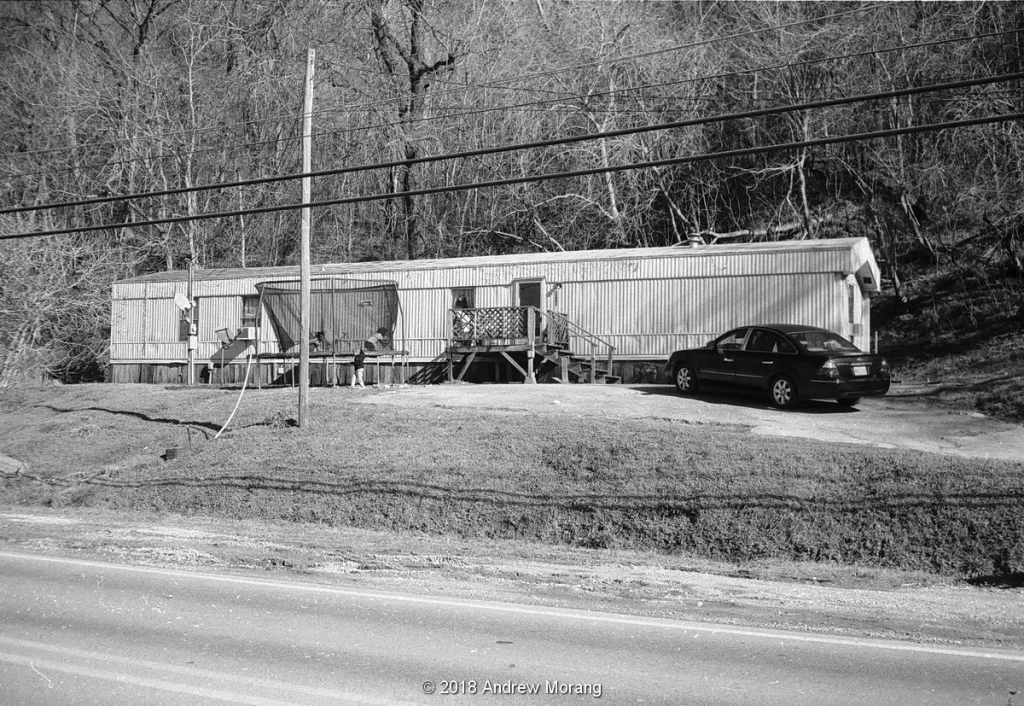
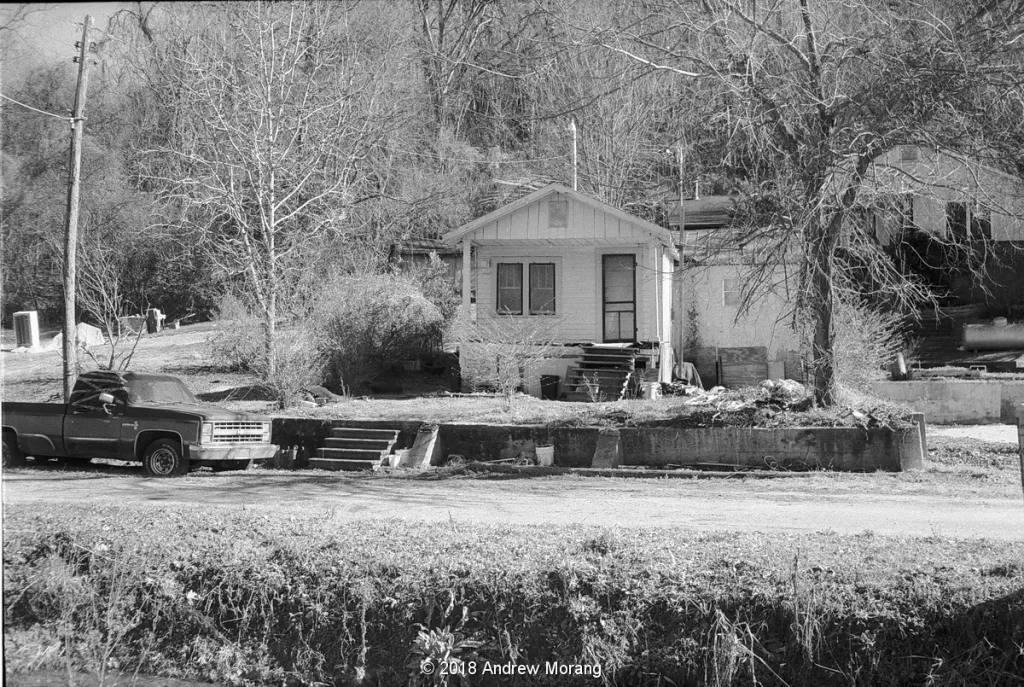
The Trip 35 In Use
Regardless of these limitations, this Olympus Trip 35 is fun. With this little Trip 35, you can leave the focus at infinity (the mountain symbol), raise the camera to frame, and snap away. It is so simple, so liberating. I can take it with me on the bicycle, stop where I see something interesting, and snap a photograph. But I noticed I still support it in the same way as my bigger cameras: left hand cradling the lens and right hand holding the right side and index finger on the shutter button. Solid grip, no breathing, and careful press. So maybe I am really not spontaneous, but it is less of an effort than one of my “serious” cameras.
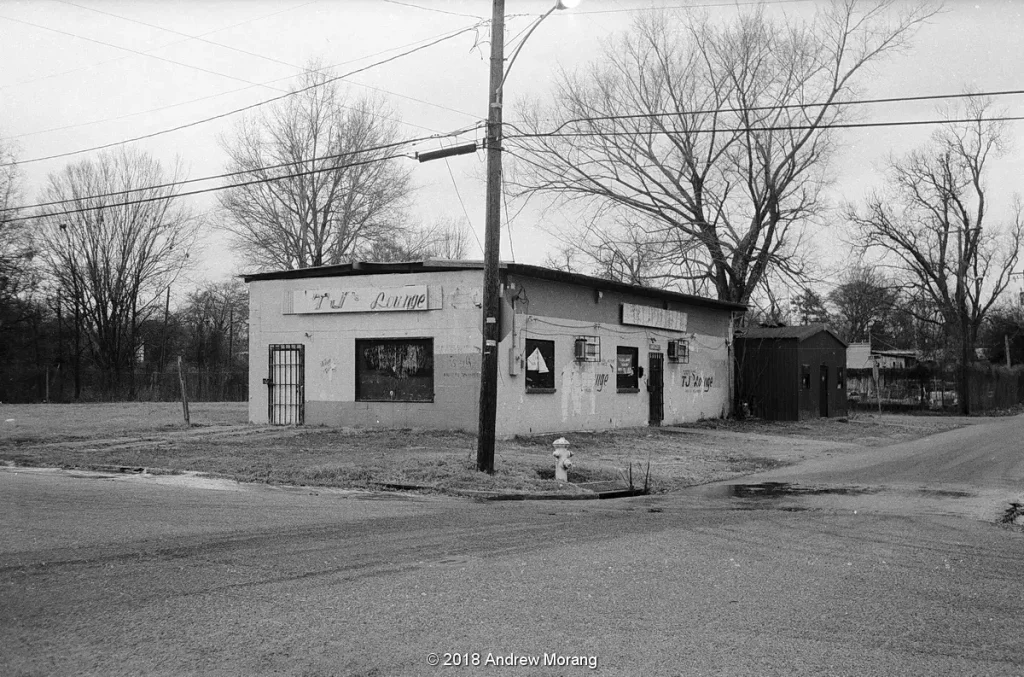
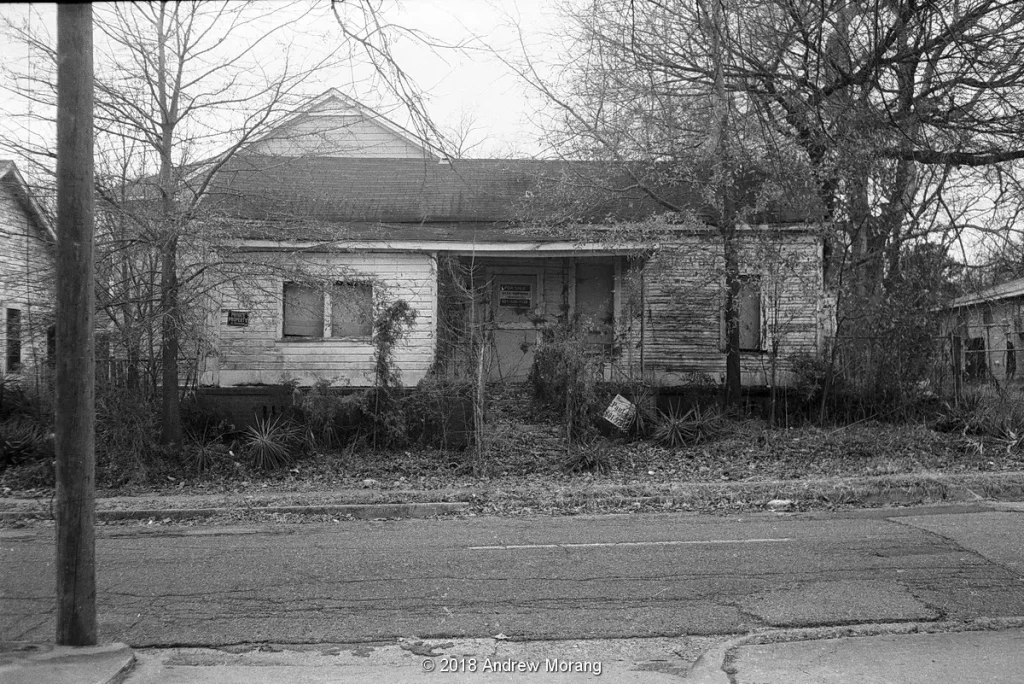
At low light, you can see the limitations of the Olympus Trip 35. Contrast is a bit low, and you should use a hood. And once the red flag pops up and locks the camera, your only option is to move the aperture control off “A” to 2.8 and hope the exposure will be adequate. Because I often take pictures in low-light conditions or in old buildings and factories, this little Trip 35 is rather restricting. Also, although there is no indication of when the selenium meter has set the lens wide open, the edges of the frame in dusk are a bit soft. I assume the lens is close to 2.8. It is certainly not as well corrected as a 35mm Summicron or 35mm Super-Takumar, but, of course, those are more sophisticated and expensive designs.
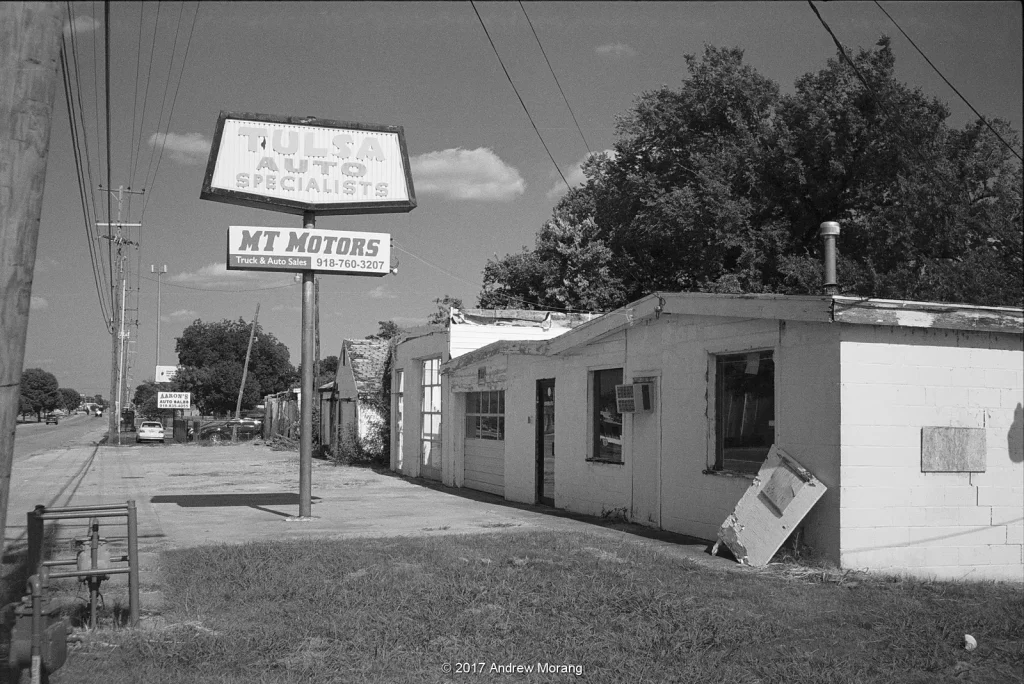
Despite some limitations, do not let me dissuade you from trying the little Olympus Trip 35. They are fun, inexpensive, and take good photographs. Thank you for reading, and thanks Hamish for letting me post these ramblings.
For more urban decay photography, please see: https://worldofdecay.blogspot.com
Share this post:
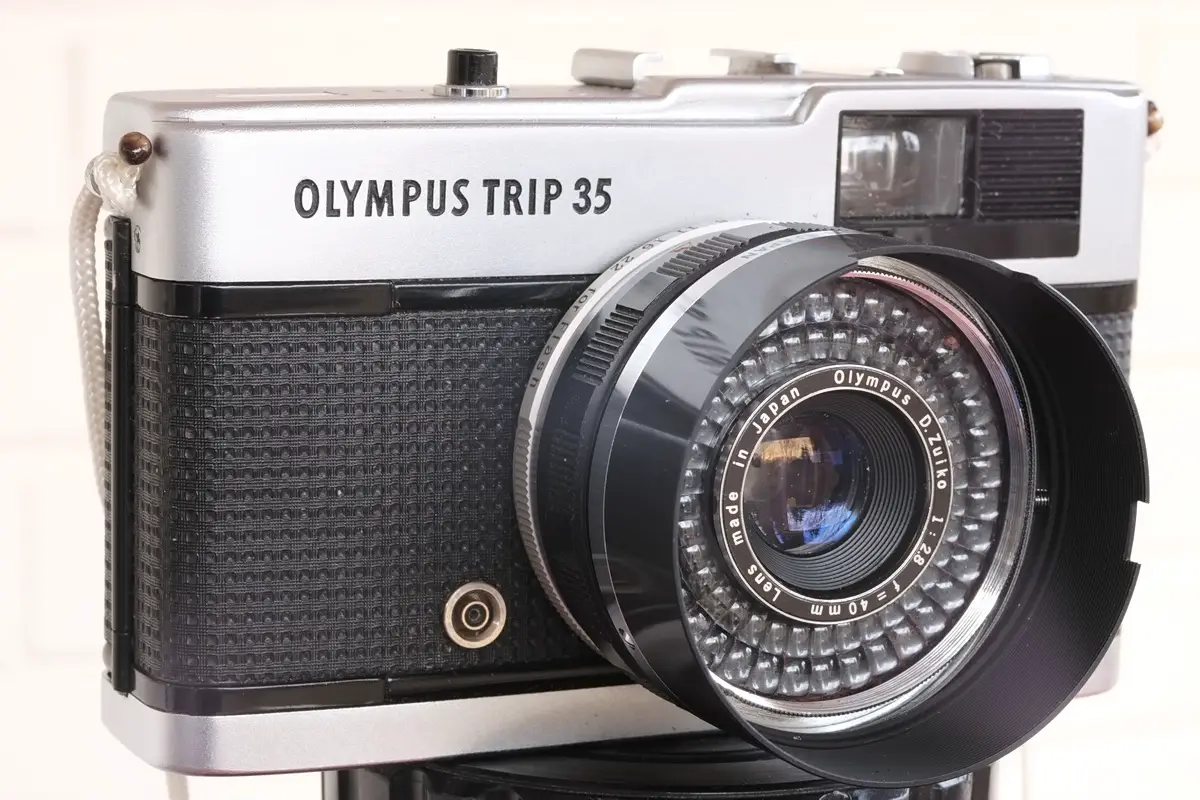








Comments
Paul Graham on Olympus Trip 35 Review – Learning to be More Spontaneous – by Andrew Morang
Comment posted: 06/05/2018
I use a 24-30.5mm on my Rollei 35.
Comment posted: 06/05/2018
Philip Brooke on Olympus Trip 35 Review – Learning to be More Spontaneous – by Andrew Morang
Comment posted: 09/05/2018
Nigel Cliff on Olympus Trip 35 Review – Learning to be More Spontaneous – by Andrew Morang
Comment posted: 22/05/2018
Recommended reading : Down the Road on Olympus Trip 35 Review – Learning to be More Spontaneous – by Andrew Morang
Comment posted: 05/03/2020
Time to Meet Some of the Most Gorgeous Olympus Trip 35 Cameras Ever! – Photography on Olympus Trip 35 Review – Learning to be More Spontaneous – by Andrew Morang
Comment posted: 30/10/2020